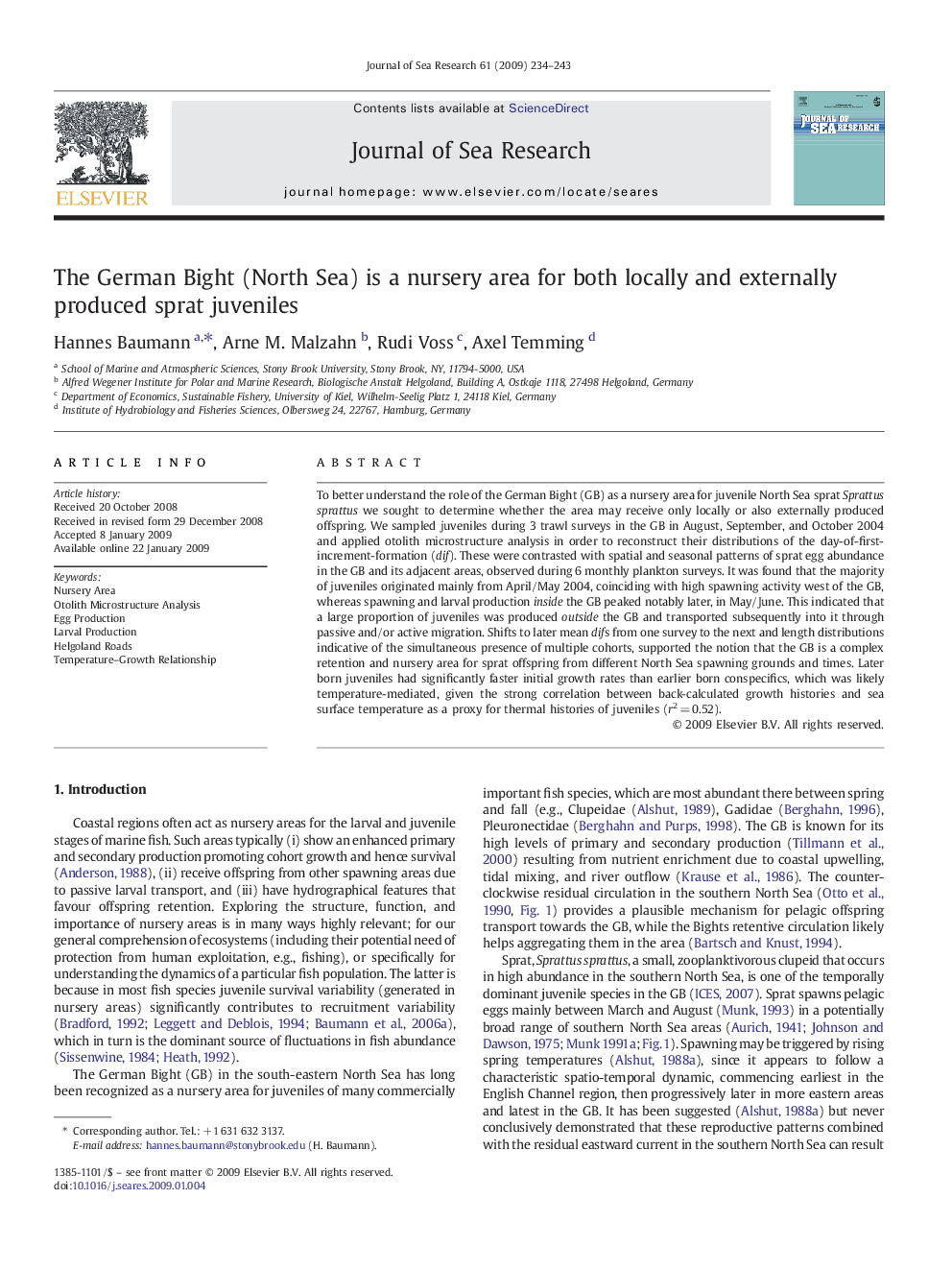| Article ID | Journal | Published Year | Pages | File Type |
|---|---|---|---|---|
| 4550219 | Journal of Sea Research | 2009 | 10 Pages |
To better understand the role of the German Bight (GB) as a nursery area for juvenile North Sea sprat Sprattus sprattus we sought to determine whether the area may receive only locally or also externally produced offspring. We sampled juveniles during 3 trawl surveys in the GB in August, September, and October 2004 and applied otolith microstructure analysis in order to reconstruct their distributions of the day-of-first-increment-formation (dif). These were contrasted with spatial and seasonal patterns of sprat egg abundance in the GB and its adjacent areas, observed during 6 monthly plankton surveys. It was found that the majority of juveniles originated mainly from April/May 2004, coinciding with high spawning activity west of the GB, whereas spawning and larval production inside the GB peaked notably later, in May/June. This indicated that a large proportion of juveniles was produced outside the GB and transported subsequently into it through passive and/or active migration. Shifts to later mean difs from one survey to the next and length distributions indicative of the simultaneous presence of multiple cohorts, supported the notion that the GB is a complex retention and nursery area for sprat offspring from different North Sea spawning grounds and times. Later born juveniles had significantly faster initial growth rates than earlier born conspecifics, which was likely temperature-mediated, given the strong correlation between back-calculated growth histories and sea surface temperature as a proxy for thermal histories of juveniles (r2 = 0.52).
